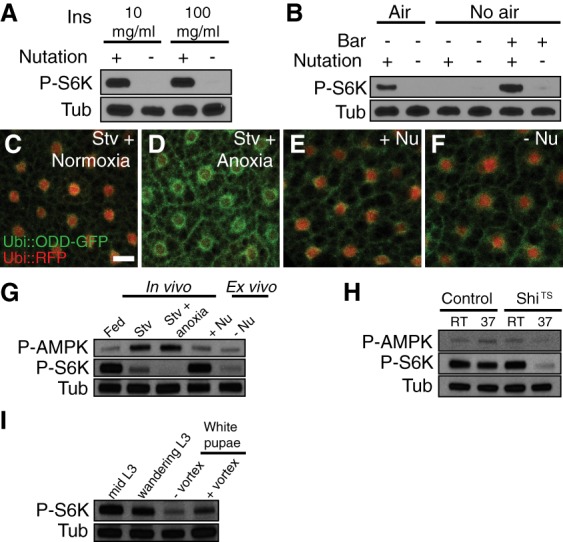Figure 2.

Mechanical stress regulates fb-TOR activation. (A) A 10-fold higher concentration of insulin (100 µg/mL) was unable to activate fb-TOR without nutation ex vivo. (B) Incubation of dissected carcasses in M3 + insulin medium without an air bubble activated fb-TOR in a mechanical stress-dependent manner. A cylinder-shaped bar (7 mm in length and 2 mm in diameter) provided mechanical stress during nutation. (C–F) Oxygen-sensitive reporter Ubi::ODD-GFP accumulated under anoxic (D) compared with normoxic (C) conditions. Incubation ex vivo with or without nutation (Nu) did not cause accumulation of Ubi::ODD-GFP (E,F). Ubi::RFP was coexpressed as an oxygen-insensitive control. Bar, 20 µm. (G) The level of phosphorylated AMPK (P-AMPK) in fat body extracts was increased in vivo by starvation under either normoxic or anoxic conditions but remained low during 2-h ex vivo incubation with or without nutation. (H) Fat body P-AMPK levels in larvae anesthetized by ShiTS-induced motor neuron inhibition for 30 min in vivo were not increased relative to controls. (I) fb-TOR activity was decreased in stationary white pupae relative to motile L3 larvae and was restored by vortexing pupae for 15 min.
